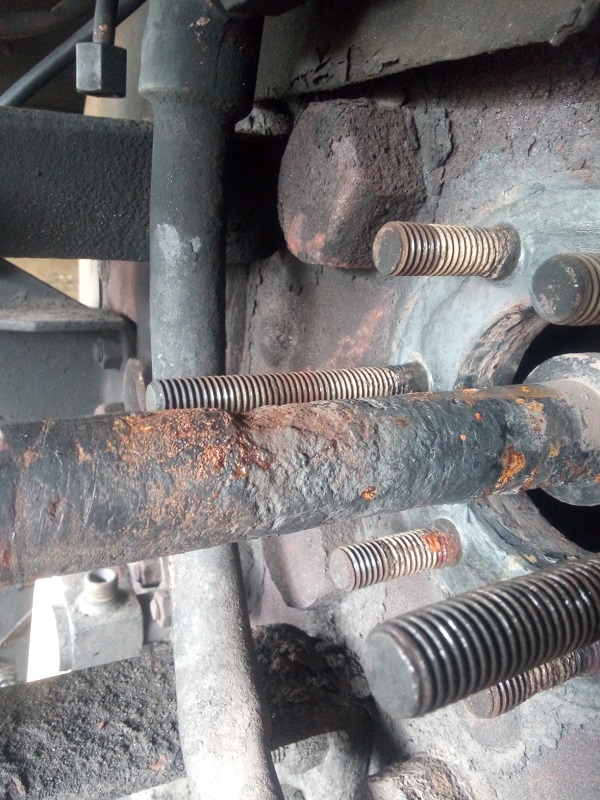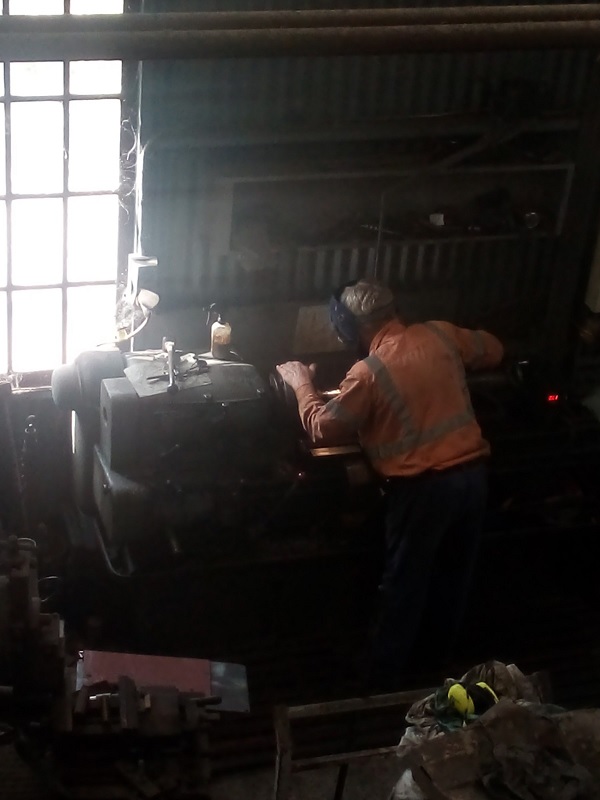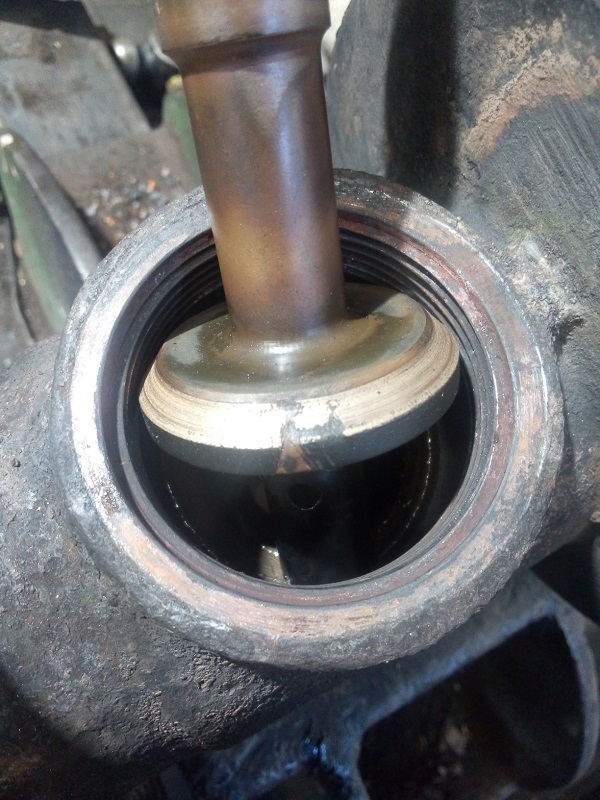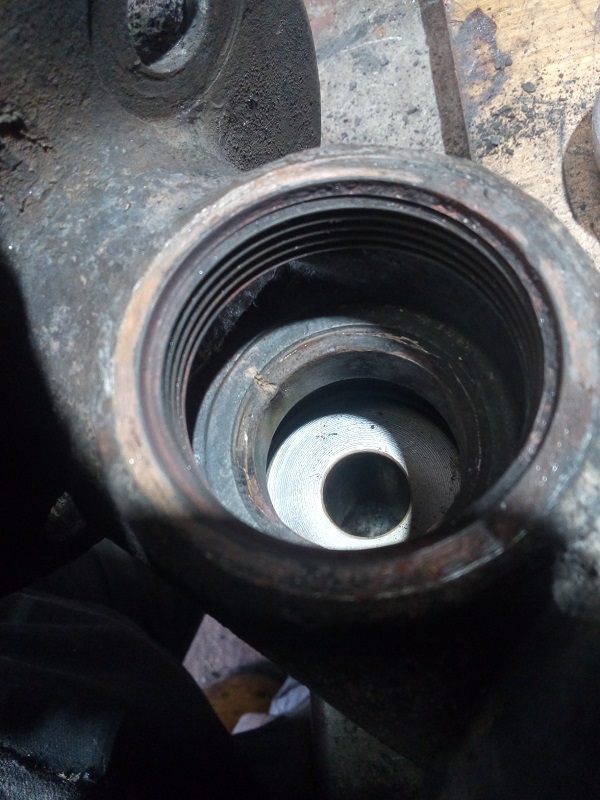While we keenly await Mick’s Magnum Opus about the recent ABC exam on J549 we’ll take the opportunity to describe in a bit more detail a couple of the more interesting jobs undertaken during the recent exam.
The regulator shaft was one of the components that Mick knew would need some serious attention. During last year’s annual exam some bad spots were noticed and the gland packing had required replacement 3 times during the year as the increasing damage to the shaft from corrosion tore at the packing. With the loco coming out of service for a few weeks it was time to take a look at it and assess what work was required.
Like a throttle on a motorcycle or accelerator on a car the regulator transfers the input from the driver to the engine but due to the high boiler pressures involved on a Steam Locomotive it needs to be in tip top shape to ensure good, safe performance. As you can see from the shot below the best days were well and truly behind this one!

The shaft itself is a long, unwieldy bit of kit that runs through the boiler connecting the regulator handle to the regulator valve in the steam dome. On a coal burner the shaft can be withdrawn out through the cab with the tender in place but on an Oil Burner like our J549 the oil tank is in the way so the tender needs to be disconnected from the locomotive. Lucky we were doing that anyway for the purpose of the C exam!
The shaft operates the regulator valve via an eccentric and this is a simple square fit on the shaft requiring no fastenings but of course you still need to get inside the dome to tap it out and support it once it starts to move. The dome lid needs to be removed for this purpose, not the pretty black shroud that you see when the loco is running but the lid underneath. This involves undoing the 30 or so nuts that hold the dome cover onto the boiler. Carefully. If not done properly you risk warping the dome cap and/or damaging the copper sealing ring.
Once out it was pretty obvious that some major work would be required and it was decided to cut the shaft in two (in the same spot that it had been cut previously) to allow it to be machined in the lathe. Baz’s expertise was ideal for this job and so he was um, er, seconded? Stolen? Let’s say borrowed from the Civil department for a few days. Firstly all of the corroded material was removed which showed up a lot of damage, in some parts it was almost half the original diameter. Next Baz welded new material in place running weld up and down the length while the shaft was mounted in the lathe and rotated by hand as new metal was added, a long and tedious task. Next it was machined back by Geoff and this process was repeated 3 times to ensure no imperfections which could wreck the gland packing again or worse lead to a failure. When the job was finished the shaft was welded back together ready for refitting. Below we see Baz in action and the shaft in the lathe being machined.


Another area which needed attention was the Whistle Valve and Seat. When removed there was obvious signs of wear caused by Steam leaking around the valve as shown in the first shot below. As we have mentioned before Steam is corrosive and once a leak starts it is very efficient at cutting through pretty much any material. In the second shot you can see the damage to the Whistle Valve Seat which probably created the leak in the first place. Once it began to leak the steam quickly damaged the valve itself.


In the shot below we see the valve in the lathe being machined with Mick doing the honours. He also had the pleasure of doing the seat which needs to be done by hand. Hours and hours of work goes into these types of jobs and if not done properly and to an exacting standard the leaks will just start again and the corrosion cycle will begin anew.

We’ll finish up this post with a few shot of volunteers doing various jobs around the workshop. The guys do a great job especially considering the limited resources at their disposal. If you think you have something to offer talk to Mick in the workshop, it is a friendly and welcoming environment and we are always looking for help!

Above Left Mick (not strictly a volunteer) and Pete with the rare opportunity of a bench each and Right Pete does battle with a starting valve!
Below Left, Geoff playing with an angle grinder and Right Brian washing parts. Geoff spent most of his working career as a fitter with a Brewery, just goes to show that you don’t need to be a rail worker to have skills we can use in the workshop!

Well that is about all we have time for this post. Today was a busy day with the Royal Train arriving from Seymour with our long lost T333 in tow along with a few VR bogie louvre vans which we seem to have adopted. The work just keeps on coming for our busy crew at the Victorian Goldfields Railway Maldon workshop.
